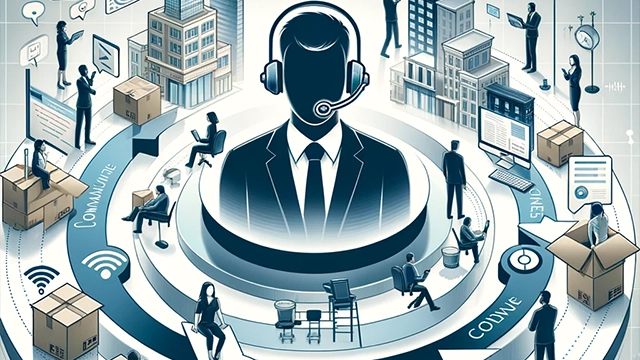
The complexities of office relocations are often underscored by the tangible aspects – the packing, the physical move, and the setup in a new location. Yet, at the heart of a successful office transition lies an element as critical as any logistical task: effective communication. When organizations move, it’s not just the furniture being relocated; it’s people, culture, and the daily rhythms of work life. That’s why effective communication is not merely a supportive tool but a cornerstone in the planning, execution, and adaptation phases of office relocations.
Office relocations happen for various reasons: a company might be expanding, downsizing for cost efficiency, or simply seeking a location that better suits its strategic needs. Whatever the motive, a move can be one of the most significant changes a company undertakes. The success of such a transition depends mainly on managing the inherent challenges effectively. From coordinating with furniture removalists in Sydney or Melbourne to ensuring the IT infrastructure is moved without a glitch, every detail counts. But beyond the physicality of the move lies the emotional and psychological impact on employees, clients, and other stakeholders. This is where the power of effective communication comes into play.
The first step towards ensuring a smooth relocation is developing a robust communication strategy. This involves defining clear objectives, identifying key stakeholders, and selecting appropriate channels to disseminate information. It’s essential to communicate transparently about the reasons behind the move and the benefits it will bring. This could involve multiple sessions where teams are briefed and questions are answered, fostering a culture of openness.
Establishing feedback mechanisms is crucial. It helps in understanding employee concerns, which could range from the practical – how on-time removals will handle their items – to the more complex, like job security or changes in commute. Sharing a detailed timeline and painting the big picture helps everyone stay aligned with the process.
As the relocation process kicks off, maintaining open communication becomes even more vital. This includes providing real-time updates and being agile enough to address unforeseen challenges. Collaboration tools and project management software have become indispensable, ensuring that whether it’s removalists in Sydney or the IT support team in Melbourne, everyone is on the same page.
Coordination among different teams is essential, and a central communication hub can facilitate this. Celebrating milestones and acknowledging the hard work of groups can also play a significant role in keeping morale high during this taxing phase. An office move isn’t just about moving physical items, it’s about moving people emotionally.
Once the physical move is complete, the communication focus shifts to helping employees settle in. Gathering feedback through surveys or discussions allows the management to understand how the movement has impacted the workforce and to share successes and improvement areas. Continual support and resources for adjustment are imperative during this phase.
It’s also a time to reinforce any new operational norms and culture shifts accompanying the new office space. This can mean clarifying process changes or re-establishing a company culture within the new environment.
An array of digital tools supports modern relocations. From platforms that offer virtual tours of the new space to project management tools that provide live updates, technology is an enabler of effective communication. Teams can visualize their new workspace with CBD removals or engage with on-time removals to ensure their workspaces are set up efficiently.
The role of leadership in modeling effective communication must be considered. Leaders must demonstrate the communication they expect from their teams, which often involves being accessible and responsive. Moreover, training to enhance communication skills pays long-term dividends, not just for relocations but for all aspects of operations.
As organizations grow and change, office relocations can become a recurring theme. The long-term benefits of effective communication on organizational adaptability should be considered. Prioritizing communication in strategic planning ensures not only a smoother transition but also a more resilient and responsive organization.
Effective communication during office relocations is about more than just ensuring everyone knows their roles; it’s about maintaining the team’s integrity, preserving company culture, and emerging more substantial on the other side. Whether you’re coordinating with removalists in Sydney, IT support in Melbourne, or any service in between, remember that how you communicate can define the success of your move just as much as the efficiency with which you pack and unpack your desks.
Website by ASIA